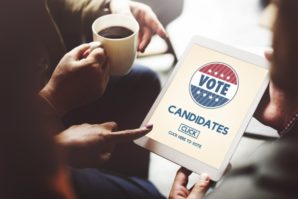
The 2016 general election has already been unlike any other in history — and we aren’t just talking about the candidates. Almost everything about how we view elections, discuss politics, and make predictions has been turned on its ear, and perhaps nothing has changed so much as political polling.

Throughout the primary season, pundits and reports, not to mention voters themselves, were baffled by various polls that all seemed to be reporting on different elections. One poll might show a candidate with a handy lead over the closest competitor, while another poll, presumably also of likely voters, would show another candidate in the lead. The result was nothing short of confusion, and a situation that continues to confound voters as we move ever closer to Election Day.
So what is the issue? Some wonder if the discrepancies are due to bias or other issues in the political process. But when even well-respected organizations or websites like RealClearPolitics, which is noted for its accuracy and unbiased reporting and interpretation of political news, releases a poll featuring vastly different results than other polls, clearly something has changed. And the answer? Technology.
Fewer Landlines = Skewed Results
These days, more than 60 percent of Americans use their cellphones almost exclusively. And among those individuals who do still have landline telephone service at home, very few actually answer calls that come in from unfamiliar or unlisted numbers.
What this means for pollsters is that it’s become increasingly difficult to actually reach likely voters to ask them the questions that determine the poll results. Up until recently, most political polling has been done via random digit dialing via robo-dialers. The widespread societal backlash against robocalls, and the Do Not Call list, has had a major impact on the success of political polls in addition to the dearth of working landline numbers. In the 1970’s, a political pollster could reasonably expect that at least 70 percent of the numbers called would be answered by a qualified voter. In 2016? That number has dropped to less than 1 percent of calls.
And even if the calls are answered, that doesn’t mean that the person on the other end of the line is a qualified voter or part of the demographic the pollster is looking for. In many cases, those who still have and answer landline phones are older (often elderly) white, and in a higher income bracket, which is problematic when the pollsters are attempting to reach a broader cross section of likely voters. In addition, because in some areas of the country, voting registration files are out-of-date due to many voters moving, changing phone numbers, etc., voter samples are often skewed, creating inaccurate polling numbers.
Is Calling Cellphones the Answer?
It would seem, then, that the answer to the polling problem is simply to call cellphones instead of landlines. However, there are some issues with this.
First, calling cellphones is much more expensive than calling landlines. Because there are no commercially available directories of cellphone numbers, pollsters must manually dial suspected cellphone numbers within a specific geographic area to reach individuals. This costs much more than robo-dialing.
In addition, those who use cellphones tend to be much more mobile than other members of the population, and the area code of their cell phone number may not be that of where they actually live. For instance, if someone moves and ports their cellphone number from their old city to their new city, they could receive calls for surveys that they do not actually qualify for. This is also an issue for those who use cellphones issued by an employer, where the number may or may not match the area code and exchange of where they live. This isn’t as much of an issue for polls being conducted on a national scale, but for those polls with a specific state or local focus, could present some problems.
Fixing the Polling Problem
Since the solution to the polling problem can’t be easily solved by adding cellphones to the mix, what is the solution? It seems that the answer lies in the catalyst of the issue itself: Technology.
A growing number of political analysts — and even candidate teams themselves — are moving away from polls as a determinant of success, and looking instead at data analytics. Using data culled from multiple sources, ranging from social media to new articles and yes, even polls, analysts are developing algorithms to predict election outcomes with near startling accuracy. It’s a new frontier in political polling, and one that promised to change the way we view elections, and other major news events, well past the wild election of 2016.

Leave Your Comments